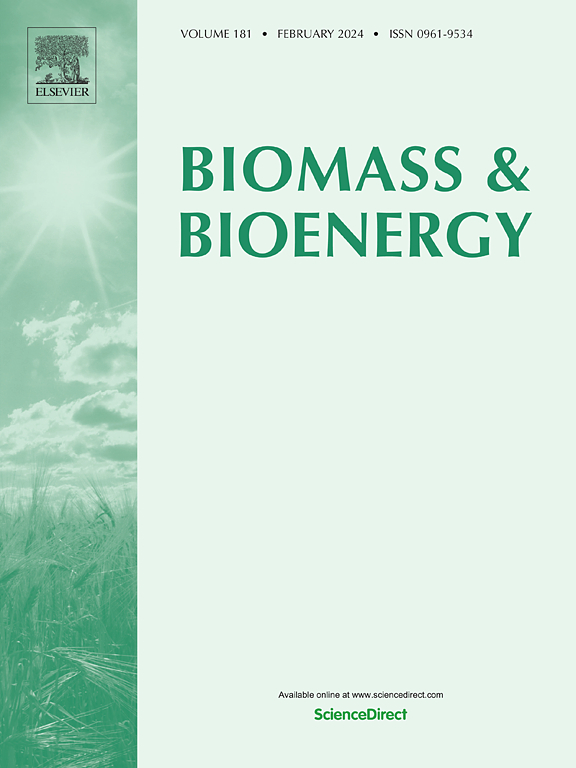Comparative studies of co-conversion of waste activated sludge and lignocellulosic wastes through hydrothermal liquefaction
IF 5.8
2区 生物学
Q1 AGRICULTURAL ENGINEERING
引用次数: 0
Abstract
The effects of feedstock type on hydrothermal liquefaction were explored through the co-conversion of waste activated sludge and various lignocellulosic biomass sources, including birchwood sawdust, cornstalk, and waste newspaper. This investigation aimed to produce bio-oil under consistent conditions at 310 °C and a 10-min reaction time, with subsequent comparison to results obtained using single feedstocks. The co-feeding of sludge with cornstalk and sawdust demonstrated the highest bio-oil yields at 34.2 % and 33.7 % wt%, respectively. The comprehensive characterization of the bio-oil products revealed that feedstock type influenced elemental composition and, consequently, the higher heating value of the bio-oils. Bio-oils derived from co-feeds exhibited a significant presence of nitrogenous compounds, esters, and fatty acids in contrast to the high percentage of phenolic compounds found in bio-oils from single feedstocks. Furthermore, these co-feed bio-oils displayed lower molecular weights, higher quantities of low boiling point compounds, increased volatile matter content, and reduced fixed carbon content compared to bio-oils produced from single feedstocks.
求助全文
约1分钟内获得全文
求助全文
来源期刊

Biomass & Bioenergy
工程技术-能源与燃料
CiteScore
11.50
自引率
3.30%
发文量
258
审稿时长
60 days
期刊介绍:
Biomass & Bioenergy is an international journal publishing original research papers and short communications, review articles and case studies on biological resources, chemical and biological processes, and biomass products for new renewable sources of energy and materials.
The scope of the journal extends to the environmental, management and economic aspects of biomass and bioenergy.
Key areas covered by the journal:
• Biomass: sources, energy crop production processes, genetic improvements, composition. Please note that research on these biomass subjects must be linked directly to bioenergy generation.
• Biological Residues: residues/rests from agricultural production, forestry and plantations (palm, sugar etc), processing industries, and municipal sources (MSW). Papers on the use of biomass residues through innovative processes/technological novelty and/or consideration of feedstock/system sustainability (or unsustainability) are welcomed. However waste treatment processes and pollution control or mitigation which are only tangentially related to bioenergy are not in the scope of the journal, as they are more suited to publications in the environmental arena. Papers that describe conventional waste streams (ie well described in existing literature) that do not empirically address ''new'' added value from the process are not suitable for submission to the journal.
• Bioenergy Processes: fermentations, thermochemical conversions, liquid and gaseous fuels, and petrochemical substitutes
• Bioenergy Utilization: direct combustion, gasification, electricity production, chemical processes, and by-product remediation
• Biomass and the Environment: carbon cycle, the net energy efficiency of bioenergy systems, assessment of sustainability, and biodiversity issues.
 求助内容:
求助内容: 应助结果提醒方式:
应助结果提醒方式:


